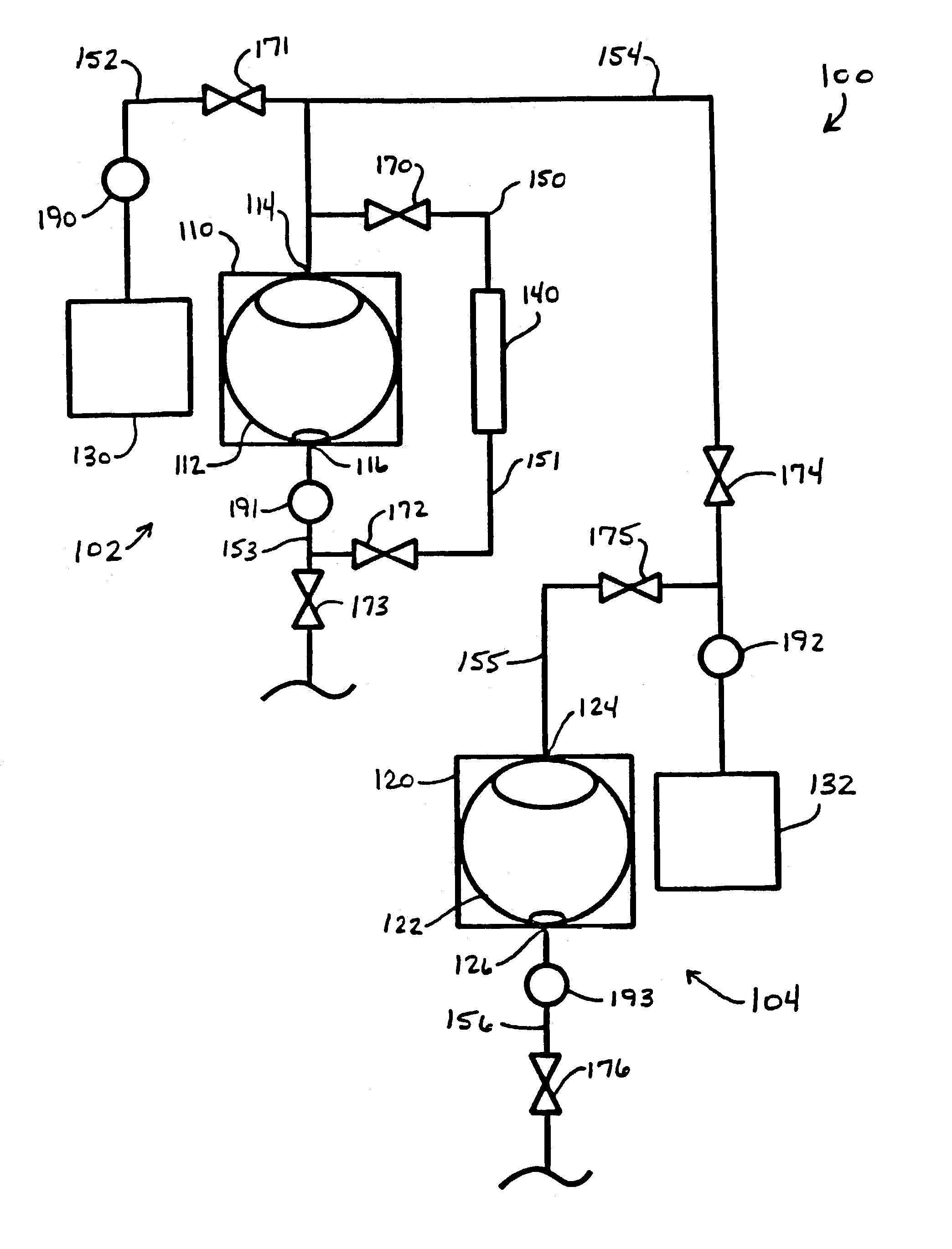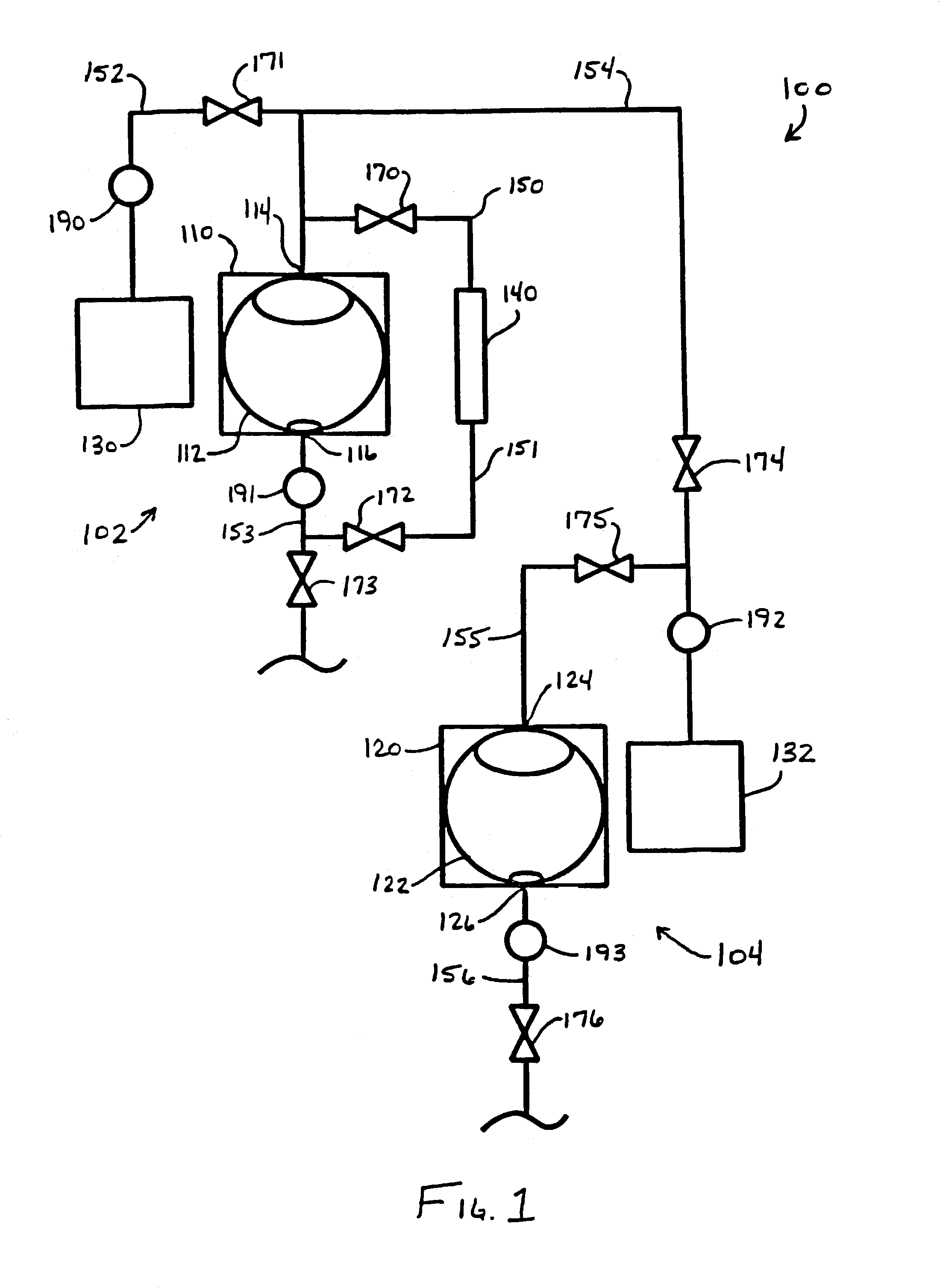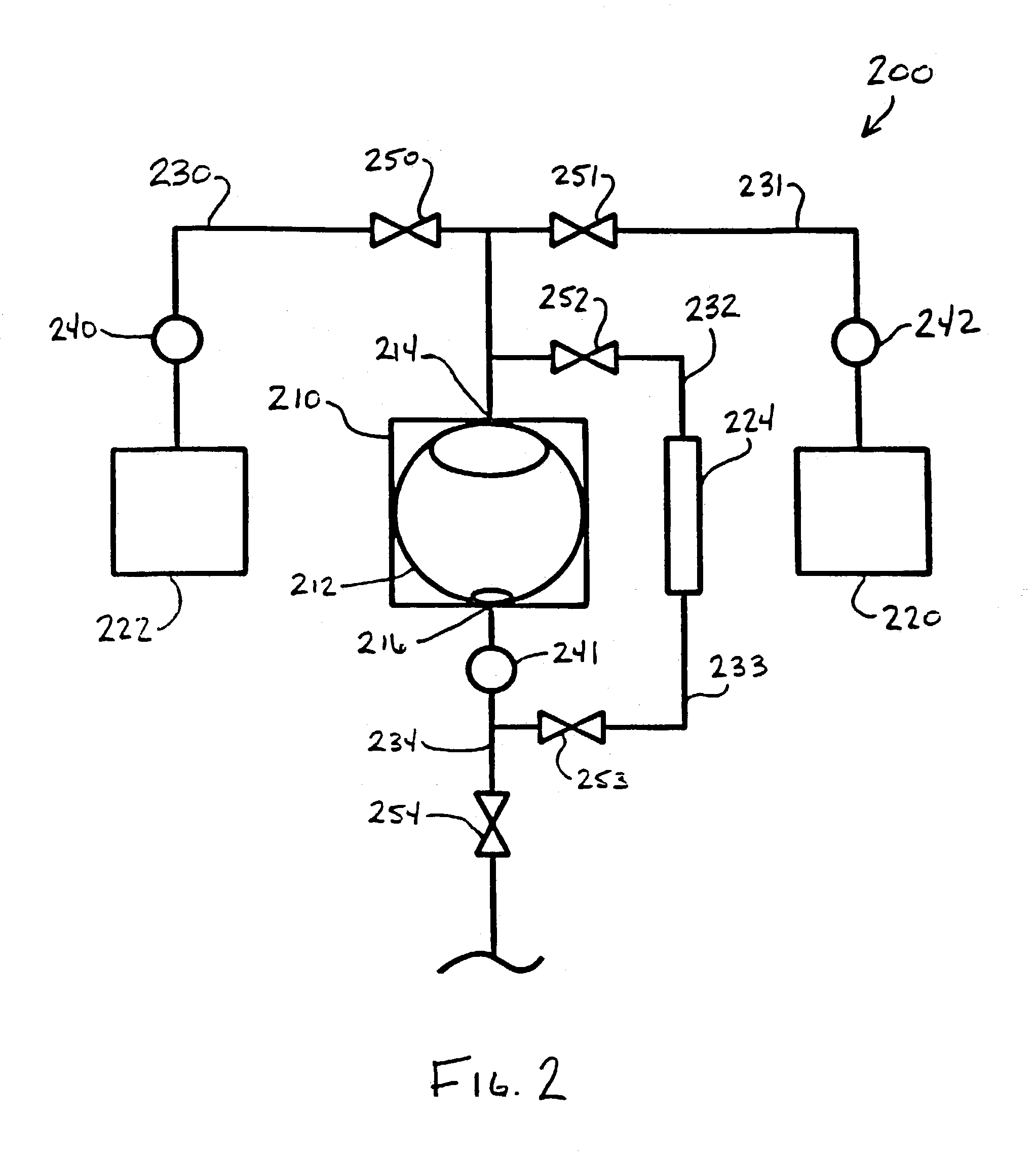Cleaning system utilizing an organic cleaning solvent and a pressurized fluid solvent
a technology of organic cleaning solvent and pressurized fluid, which is applied in the direction of cleaning using liquids, detergent compounding agents, liquid soaps, etc., can solve the problems of significant regulatory burden on solvents, increased costs for users, and doubts about the usefulness of employing conventional methods and systems, etc., to achieve high vapor pressure, low boiling point, and high vapor pressure
- Summary
- Abstract
- Description
- Claims
- Application Information
AI Technical Summary
Benefits of technology
Problems solved by technology
Method used
Image
Examples
Embodiment Construction
[0030]Reference will now be made in detail to embodiments of the invention, examples of which are illustrated in the accompanying drawings. The steps of each method for cleaning and drying a substrate will be described in conjunction with the detailed description of the system.
[0031]The methods and systems presented herein may be used for cleaning a variety of substrates. The present invention is particularly suited for cleaning substrates such as textiles, as well as other flexible, precision, delicate, or porous structures that are sensitive to soluble and insoluble contaminants. The term “textile” is inclusive of, but not limited to, woven or non-woven materials, as well as articles made therefrom. Textiles include, but are not limited to, fabrics, articles of clothing, protective covers, carpets, upholstery, furniture and window treatments. For purposes of explanation and illustration, and not limitation, exemplary embodiments of a system for cleaning textiles in accordance with...
PUM
| Property | Measurement | Unit |
|---|---|---|
| flash point | aaaaa | aaaaa |
| temperature | aaaaa | aaaaa |
| temperature | aaaaa | aaaaa |
Abstract
Description
Claims
Application Information
 Login to View More
Login to View More - R&D
- Intellectual Property
- Life Sciences
- Materials
- Tech Scout
- Unparalleled Data Quality
- Higher Quality Content
- 60% Fewer Hallucinations
Browse by: Latest US Patents, China's latest patents, Technical Efficacy Thesaurus, Application Domain, Technology Topic, Popular Technical Reports.
© 2025 PatSnap. All rights reserved.Legal|Privacy policy|Modern Slavery Act Transparency Statement|Sitemap|About US| Contact US: help@patsnap.com



